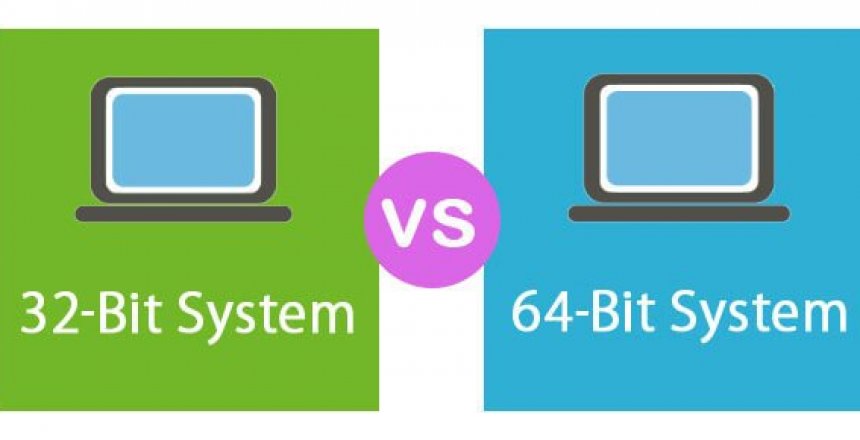To think that when I was a kid I used 8 bit computers like the Commodore PET, BBC Model B and Sinclair ZX Spectrum. All new computers are 64 bit.
Intro to bits and bytes
Computers work in binary (sometimes called base 2), which means there are two states on and off (1 and 0) and it is those binary digits that are shortened to bits. 8 bits is called a byte. Computer speak refers to a multiple of bytes, such as a kilobyte (a 1,000 bytes); megabyte (1,000 kilobytes) also gigabytes and terabytes are in common language today.
32 bit vs 64 bit
Inside your computer is a microprocessor called the CPU (Central Processing Unit) and that has it’s own language inside that it uses to manipulate data and store it in registers. In an 8 bit CPU, there was a specific set of instructions to handle 8 bit registers. In a 16 bit CPU, they kept the instructions to access 8 bit registers, adding instructions for 16 bit.
When they created the 32 bit CPU, they dropped the instructions to handle 8 bit registers and replaced them with instructions for 32 bit registers.
In turn, the 64 bit CPU dropped 16 bit instructions for 64 bit instructions,
This means that a program written in the 1990s would work okay on a 32 bit computer, but not run at all on a 64 bit computer.
So why change to 64 bit?
An 8 bit computer could only access 64KB of RAM (Random Access Memory); 16 bit had a maximum of 16MB and 32 bit a maximum of 4GB.
A 64 bit computer can access up to 1TB of RAM.
Time
Back in the 1960s, developers wrote programs that they thought would only last a couple of years before they’d be replaced, so they wrote programs that saved their limited space by using 2 digit dates instead of 4 digit dates. In 1970, it was decided that time would be defined as the number of seconds after midnight on 1st January 1970, known as the Unix epoch stored in a 32 bit number. Fast forwards to the late 1990s and those programs written in the 1960s are still being used, and being used in the banking and stock exchanges and had never been replaced. The panic of Y2K’s realisation that everything will go horribly wrong dawned on developers all over the world, and they saught to add an extra two digits to these nearly 40 year old programs.
In 2038, the 32 bit number used to store all those seconds will reset to zero, causing another chaos. This is part of the reason why developers are switching everyone to 64 bit, because they only have 38 years to do it in, and they sat on their hands for 40 years last time and there are a considerably larger number of computers now than back then to change.
Apple
Apple announced that with the introduction of it’s mobile operating system iOS 11, it stopped 32 bit applications from running on it’s devices. Developers could update their apps or they wouldn’t run.
With the introducton of Catalina (OSX 10.15), the same is true of their laptops and desktops.
Linux Mint 20
With the introduction of Linux Mint 20 next month, it will only support 64 bit computers. 32 bit computers will have to use 19.3, which will be supported until 2023.
Microsoft Windows 10
Microsoft has had support for 64 bit CPUs since Windows XP, but this year they have announced that there will be no further enhancements for 32 bit computers.
The next release of Windows 10, called 20H1 or 2004 will not include support for 32 bit computers and the next renders them obsolete.
If you upgraded your computer from Vista, Windows 7 or 8, you might have a shock.


